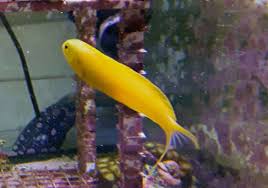The Influence of the Dragon on East Asian Cultures

The dragon, a symbol of power, wisdom, and good fortune, holds a significant place in East Asian cultures, with its influence reaching far beyond the boundaries of China. While the dragon is most prominently associated with Chinese culture, its image and symbolism have permeated the traditions, beliefs, and artistic expressions of many other East Asian countries, including Japan, Korea, and Vietnam. The image of the dragon has not only shaped the mythology, art, and architecture of these regions but has also played a pivotal role in the formation of their collective identity and cultural values.
In this article, we will explore the dragon’s influence on various East Asian cultures, examining how this mythical creature has shaped different aspects of life in China, Japan, Korea, and Vietnam. From its representation in art to its role in religious practices and festivals, the dragon’s presence is deeply ingrained in the cultural fabric of East Asia.
The Chinese Dragon: The Original Symbol of Power
The Chinese dragon, known as Lóng (龙), is perhaps the most iconic and widely recognized dragon in the world. Unlike the fearsome, fire-breathing dragons of Western mythology, the Chinese dragon is a benevolent and auspicious creature, associated with rain, fertility, and prosperity. It is often depicted as a long, serpentine creature with the features of various animals, including the antlers of a deer, the eyes of a rabbit, the head of a camel, and the scales of a fish.
In China, the dragon symbolizes the Emperor’s authority and is considered the guardian of the people, bringing good fortune, wealth, and harmony. Historically, the Chinese dragon was closely associated with imperial power. The emperor was often referred to as the “Son of Heaven”, and his reign was considered to be the rule of the dragon. The emperor’s throne, known as the Dragon Throne, was the central symbol of imperial power, and the dragon was often seen on official seals, imperial robes, and the architecture of the Forbidden City in Beijing.
The Chinese dragon also plays a vital role in religious practices and cultural festivals. The Dragon Dance, which is a significant part of the Chinese New Year celebrations, symbolizes the expulsion of evil spirits and the welcoming of good fortune for the year ahead. Dragons are also a key element in Chinese mythology, with famous mythological dragons like Fucanglong (the dragon of wealth) and Longmu (the Dragon Mother), who are believed to have divine powers and protect the people from harm.
The Influence of the Chinese Dragon on Japanese Culture
The Chinese dragon has had a profound influence on Japanese culture, where it is known as Ryū (竜 or 龍). While the concept of the dragon was initially imported from China, over time, Japan developed its own interpretation of this mythical creature, blending Chinese dragon iconography with local traditions and beliefs.
In Japan, the dragon is also associated with water, particularly rain and rivers, which are considered essential to the country’s agrarian economy. The Japanese dragon is believed to control storms, rainfall, and water resources, and it is often depicted as a guardian of natural elements. Dragons in Japan are usually portrayed with three claws, as opposed to the five claws seen in Chinese depictions, reflecting a distinction between the two cultures’ interpretations.
In Japanese mythology, dragons are often depicted as benevolent creatures who help humans. One of the most well-known dragons in Japanese culture is Ryu-Oh, the Dragon King who resides in the depths of the sea and is associated with good fortune and prosperity. Ryu-Oh is believed to control the tides and currents, and his presence ensures a bountiful harvest for the people. Another famous dragon is Seiryu, the Azure Dragon, which represents the East in the Four Symbols, a set of mythological creatures that govern the four cardinal directions.
Dragons also play a significant role in Japanese art and architecture, where they are often used as decorative elements. Dragons are featured prominently in temples, shrines, and gardens, symbolizing protection and strength. Japanese dragons can also be found in the traditional art of tattooing, where they symbolize protection, wisdom, and a connection to the divine.
The Korean Dragon: A Symbol of Royalty and National Identity
In Korea, the dragon is known as Yong (용), and it holds a special place in the nation’s culture, symbolizing royal authority, power, and divine protection. Similar to China, the Korean dragon is associated with water and is believed to control rivers, lakes, and seas. The dragon’s benevolent nature is reflected in its role as a protector of the people, bringing prosperity and harmony to the kingdom.
In Korea, the dragon is most closely associated with the Joseon Dynasty, which ruled the Korean Peninsula from the late 14th century to the late 19th century. The dragon was used as a symbol of the king’s power and was prominently featured in the royal insignia, as well as on the royal robes, throne, and palace decorations. The dragon throne in the Gyeongbokgung Palace, the primary seat of the Joseon kings, is a notable example of the dragon’s symbolic importance in Korean royalty.
Korean dragons are often depicted with a more serpentine appearance, with a long body that twists and turns through the sky or sea. Yong is believed to have the ability to transform into a human shape and interact with mortals, granting them wisdom and guidance. The dragon is also considered to be a protector of the Korean people, and many ancient palaces and temples in Korea feature dragon motifs carved into their structures to ward off evil spirits and bring good fortune.
The dragon also plays a role in Korean shamanism, where it is considered a spiritual being capable of influencing natural forces. Dragons in Korean mythology are often associated with the gods of the sky and rain and are believed to bring blessings to the land through their control of weather patterns.
The Vietnamese Dragon: A Symbol of Creation and National Pride
The Vietnamese dragon, known as Rồng, shares many similarities with the Chinese dragon, but it also has unique attributes that reflect the cultural and historical context of Vietnam. The Vietnamese dragon is often associated with the country’s founding myth, in which the first rulers of Vietnam were believed to have descended from a dragon and a fairy. According to legend, the Lạc Long Quân, a dragon king, married Âu Cơ, a fairy, and together they had a hundred sons, marking the beginning of the Vietnamese people.
The Vietnamese dragon symbolizes creation, fertility, and the strength of the Vietnamese nation. It is seen as a protector of the country, and its image is often used in Vietnamese art and architecture to convey national pride. In particular, the dragon is a prominent feature in Vietnamese royal regalia, as it was believed to be a direct connection between the royal family and the heavens.
Similar to China and Korea, the Vietnamese dragon is linked to water, rain, and agriculture. The dragon is believed to have the ability to summon rain to nourish the crops, ensuring prosperity for the nation. During Tet, the Vietnamese New Year celebration, dragon dances are performed in the streets to chase away evil spirits and bring blessings for the year ahead. The dragon is often depicted in a serpentine form, with a long, flowing body and ornate features, emphasizing its connection to water and fertility.
The Vietnamese dragon is also a symbol of resilience and unity, as it represents the strength of the Vietnamese people in overcoming adversity throughout their history.
Conclusion: The Shared Legacy of the Dragon in East Asia
The dragon is a powerful and enduring symbol that has transcended national borders, influencing the cultures and traditions of China, Japan, Korea, and Vietnam. While each culture has its unique interpretation and representation of the dragon, the creature remains a universal symbol of strength, wisdom, good fortune, and divine protection. Across East Asia, the dragon continues to play a central role in mythology, art, and festivals, embodying the hopes, beliefs, and aspirations of the people.
The influence of the dragon extends far beyond its mythical origins, having shaped the cultural identity of East Asia for centuries. Whether in the royal palaces of China, the temples of Japan, the courts of Korea, or the villages of Vietnam, the dragon’s image continues to inspire and captivate. It is a timeless symbol of the profound connection between humanity and the natural world, as well as the enduring power of myth and tradition in shaping the cultural heritage of East Asia.

